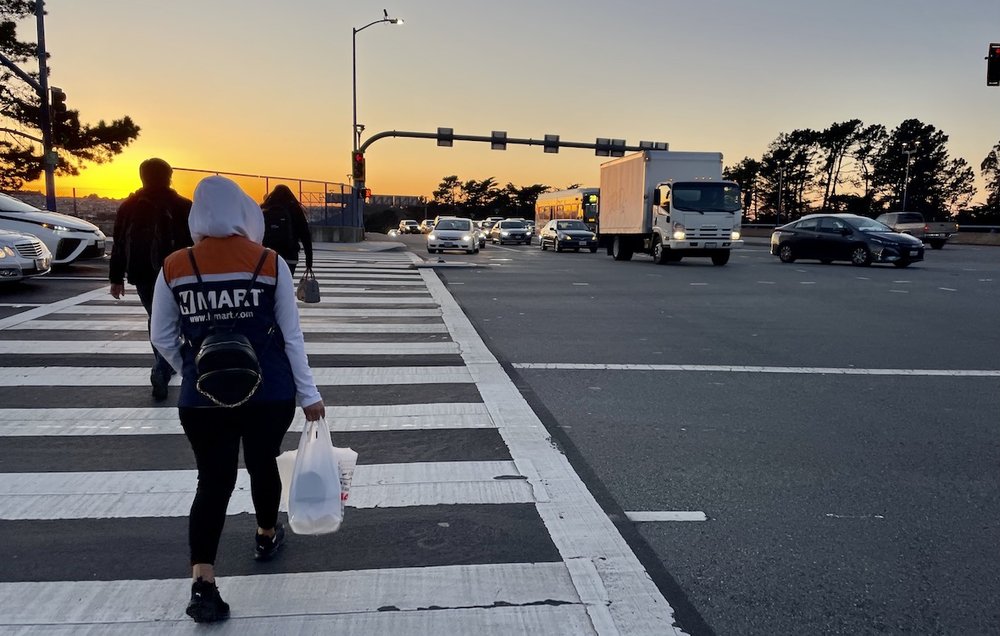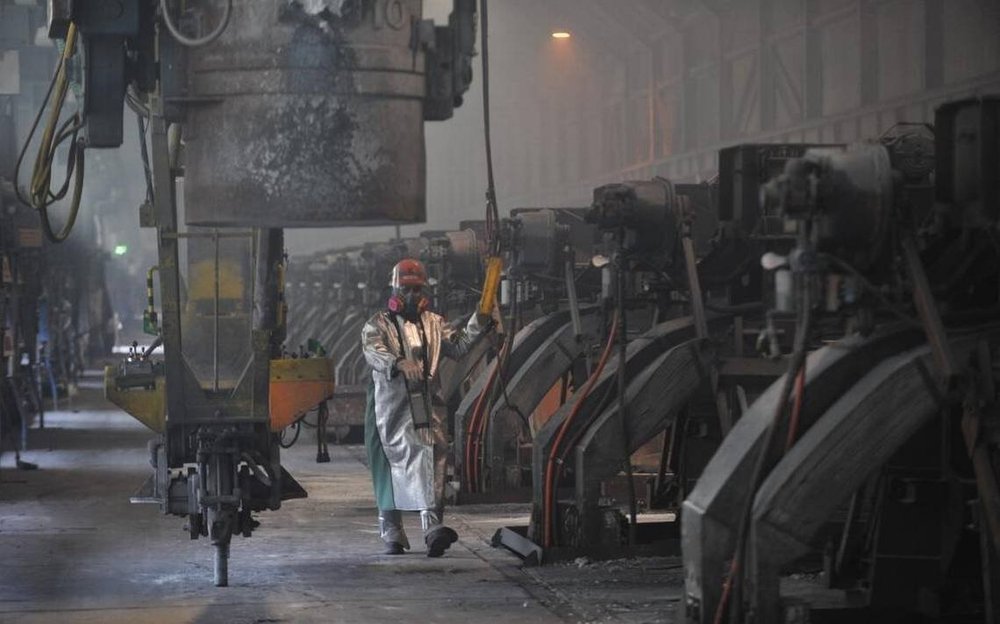This post was originally published on 15 Minutes City
The “keystone habit” for reimagining our transportation system
Alcoa worker | Saving Iceland
When Paul O’Neill arrived as the new CEO of Alcoa in 1987, he encountered an industrial company with discontented workers, a sagging stock price, and a mediocre safety record: almost every Alcoa plant had at least one accident per week. Rather than embark upon a 20-point plan to turn around the company, O’Neill focused relentlessly on just one thing: worker safety. He established a simple, unambiguous goal of zero — zero industrial accidents, zero deaths, and zero work days missed. By the time he left the company 13 years later, Alcoa had become one of the safest industrial companies in the world, with an injury rate just one-twentieth of the U.S. average.
Alcoa had changed in other ways as well. Worker/management relations had improved, productivity was up, product and process innovation was thriving, and Alcoa’s net income increased fivefold from 1987 to 2000.
This story is described in Charles Duhigg’s excellent 2012 book “The Power of Habit” [1]. In Duhigg’s framing, focusing on worker safety was the “keystone habit” that triggered a wholesale transformation of Alcoa’s entire business.
Cities and companies are, of course, very different things, but most of today’s big cities have much in common with the Alcoa of 1987. They are massively complex, and they are underperforming in myriad ways. And getting around in them can be unsafe; 43,000 people were killed in motor vehicle traffic crashes in the United States in 2021.
Vision Zero — the theory
In 1995, eight years after Paul O’Neill arrived at Alcoa, the Vision Zero concept was born in Sweden. Vision Zero, which has since been adopted by hundreds of cities around the world, is a commitment and an approach to eliminating traffic deaths and severe injuries. It distills the complex challenges of improving how we move around in our cities into a simple, unambiguous goal of zero. The goal is so simple it’s right there in the name. Not Vision Five or Vision Forty-Three Thousand. Vision Zero.
Vision Zero can be to our transportation systems what O’Neill’s single-minded focus on worker safety was to Alcoa: the keystone habit that triggers comprehensive change. If we keep people safe on and around our streets and highways, many other good things come along for the ride (pun intended). Vision Zero cities slow vehicle traffic, which brings more cyclists and pedestrians onto the street network, making our transportation system more equitable and affordable while reducing noise and air pollution. “Complete Streets” make our streets an integrated part of our neighborhoods, not a single-use conduit devoted to rapid car travel. These streets strengthen communities by making street and public spaces more inviting and activated. Green stormwater infrastructure such as rain gardens and permeable pavement can be integrated into Complete Streets design to reduce stormwater runoff. Making our streets safe — not just safer, but safe — demands a wide-ranging approach that touches all aspects of the system and leaves no stone unturned.
Vision Zero and O’Neill’s safety focus at Alcoa begin with the same principle. Whether it’s a machine operator or a cyclist, a smelter or a busy intersection, an ethical approach demands that we prioritize people’s safety. It is easy to imagine that if Paul O’Neill had been a mayor or chief transportation planner rather than Alcoa CEO, perhaps he and not Sweden’s Claes Tingvall and Maria Krafft would have created Vision Zero.
Vision Zero — the practice
Accountability under Vision Zero couldn’t be simpler. Are there any traffic deaths or severe injuries to count? If so, keep working to make the system safer.

Daly City, California | Dan Luscher
Unfortunately, too many Vision Zero cities have actually seen an increase in traffic deaths, including my own San Francisco. Walkable cities expert Jeff Speck has remarked that “here in the U.S., Vision Zero can’t help but feel like a sick joke.” Sweden’s Tingvall and Krafft themselves have observed that “weak and watered-down versions of Vision Zero” could threaten the concept globally.
If accidents at Alcoa had increased under O’Neill’s watch, he likely would have been fired, or at least dismissed as an ineffective CEO. The clear and aggressive safety goals at Alcoa had to be backed up by concrete actions and continuous follow-up, reinforcement, and adjustment. For those Vision Zero laggards with aspirations but no bottom-line results to speak of, we must demand more.
Making Vision Zero a Keystone Habit
Is there an “Alcoa” of Vision Zero cities? There are several, some of which are unsurprising — Oslo and Helsinki, with zero pedestrian deaths in 2019 — and others that are unexpected, like Hoboken, New Jersey, a city of 60,000 that hasn’t had a traffic death in over 4 years. Oslo and Helsinki have taken top-to-bottom approaches to making streets safe, including low speed limits, street designs that prioritize safety over moving traffic, significant car-free spaces, comprehensive bike networks, and robust public transportation.

Complete street illustration | Hoboken Vision Zero Plan, 2021
So it can be done. But we in the U.S. need to take Vision Zero much more seriously, with strong commitment from mayors and city councils paired with relentless follow-through. This will not just save lives, although that is critical by itself. More broadly, a vigorous focus on road safety can be the keystone habit that triggers myriad other positive changes as well. Vision Zero, when effectively implemented, can do so much more than eliminate traffic violence. It can transform our cities for the better.
[1] Duhigg’s chapter on Alcoa is available online, but I recommend getting and reading the entire book.




0 Comments